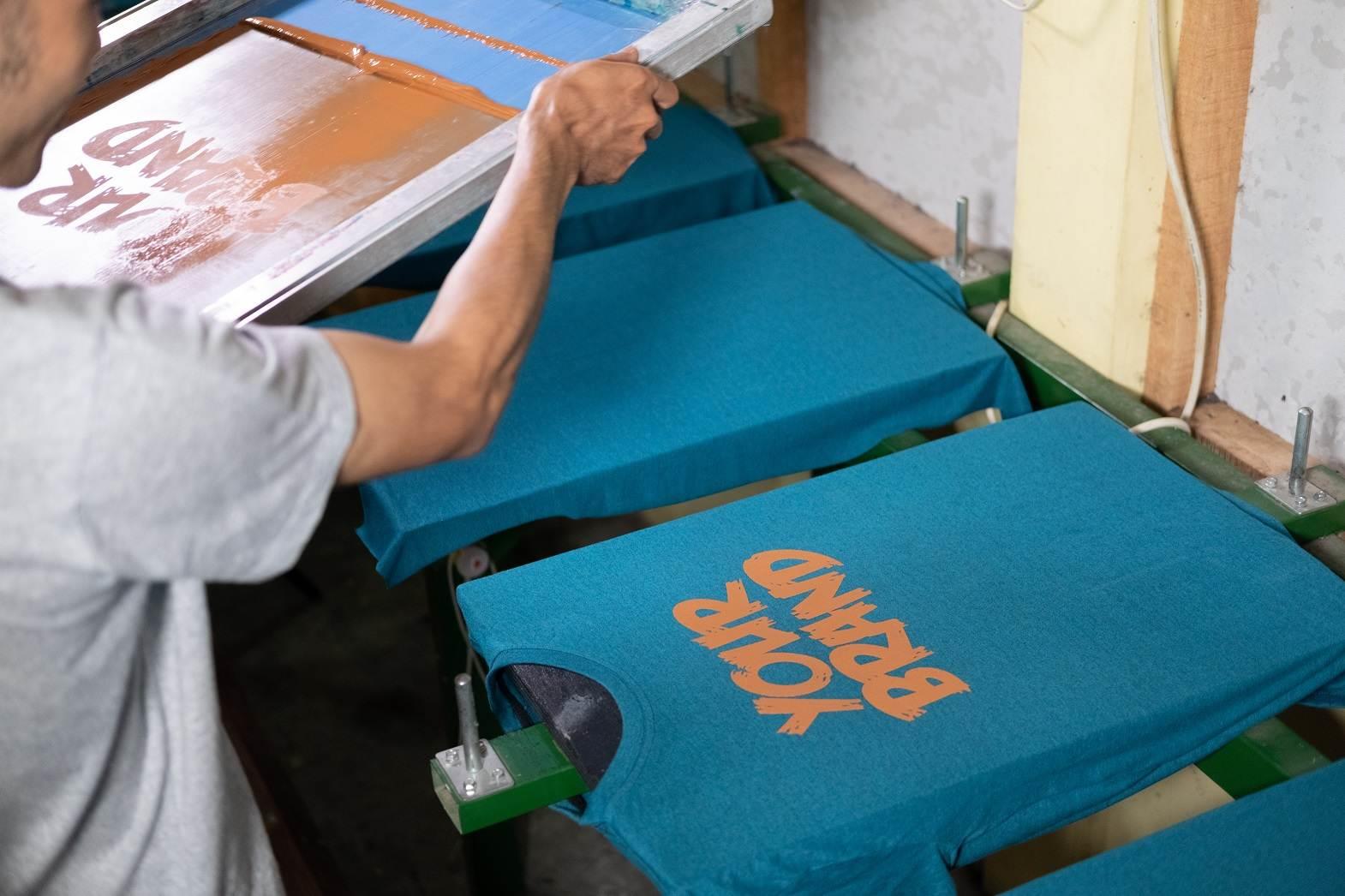The good color opacity, affordable pricing, and high productivity rates have been the reasons why they have been popular among textile printers all around the globe. PVC based chemicals contain phthalates, which are added to transform a hard plastic into a rubbery soft form, by letting long polyvinyl molecules slide against each other, instead of binding rigidly together. Phthalates are carcinogenic substances and are extremely hazardous to fetuses and infants. Hence, many brand owners, apparel retailers, and non-government organizations have been anti-PVC based inks, and owing to the growing awareness and demand for eco-friendly inks, have resulted in adopting new alternatives.
One such option has been the use of water-based inks for screen printing in the textile and apparel industry. Such inks use water as the basic solvent. There are two main types of water-based inks being used currently which are traditional ink and discharge ink. The traditional ink, also known as the air-dry ink, seeps into the fabric and binds with the fibers leaving good color fastness and washability. The discharge ink is used to remove the original dye from the apparel and replaces it with a particular color or pigment. The discharge inks free of formaldehyde formulations are also available for a pollution-free environment.
Water-based inks are easy on the pocket in comparison to solvent-based inks but yet provide the same quality, adhesion, and gloss of PVC-based inks. There is a common misconception pertaining to water-based inks, which is that they have just water. While in reality, they comprise pigments, binders, thickeners, and eco-friendly solvents. Also, water-based inks, unlike plastisol, do not need harmful solvents for the cleaning process. The screens after printing can be cleaned using water.
Many consumers prefer a soft finish where the print soaks into the surface of the fabric and the ink film cannot be felt, which can be achieved with water-based inks. However, the screen printing process with water-based inks requires an altogether different set of skills, tools, supplies, choreography, speed, and experiences.
The shelf life of water-based inks is longer than the conventional inks thanks to manufacturers who have devised a technology to encapsulate water in the ink in a way that it does not evaporate until it is printed. Available and sold in the textile chemical markets just as traditional plastisol like colors or underbases, water-based inks have thicker viscosity yielding greater opacity on finished prints.
Water based inks have the benefit of being excellent for high speed roll to roll yardage printing. Such kind of printing work is usually undertaken on large advanced equipment with a very big drying capacity. Apart from screen printing apparels like t-shirts, water based inks are preferred for towel printing. Since towels have a high nap fabric which must be printed in a style so that the ink penetrates or wicks through the to the bottom of the fabric for proper coverage, they are just right for such kinds of applications. These inks are also ideal where printing dark coloured inks on to light coloured fabrics is required and for areas where large prints are involved to provide a better texture.
Another amazing quality of water based inks is that they provide a huge room for accommodating details in prints. Unlike prints developed using discharge based inks, plastisol, or hybrid inks, discharge inks lets the pigments pass to the under base which provides greater clarity of design and thereby better detailing in designs. Moreover, water based inks work very well with big prints and printing over seams.
Water based inks also contrasting to solvent inks do not contain ozone depleting chemicals such as chlorofluorocarbon (CFC), hydro-chloro-fluoro-carbon (HCFC), volatile solvents, and aromatic hydrocarbons. There is also complete absence of lead or any other heavy metals in these environment friendly inks. Some companies also produce water based inks that are absolutely non-toxic and do not even contain any white spirits. They even pass through the Oekotex Class 1 standard and ensure to be safe for printing or dyeing innerwear, swimwear, and baby/infant wear products.
Since water based inks are a new generation of ink being used very recently, they remain a popular printing choice for garment and textile manufacturers from developed countries like America and Japan. However, China is growing to become one of the largest markets for water based inks too. There are many reasons for printers not employing water based inks despite its multiple benefits. For one, water based inks are more difficult to cure than plastisol. Since they air dry, many printers fear the chances of clogging the screen while printing garments. The use of water based inks also requires very varied techniques and hence getting used to such method of printing can be a little time consuming.
The pressure on textile chemical producers and the growing attention towards environment safety and consciousness will eventually increase the preference for water based inks over PVC based and solvent inks. With consumers demanding not just eco-friendly but also high performance and high quality clothes, water based inks definitely have a long way to go.
References:
1. Epa.gov
2. Oecotextiles.wordpress.com
3. Dspe.us
4. Idressmyself.co.uk
Image courtesy:
1. Diysilkscreenprinting.blogspot.in








Comments